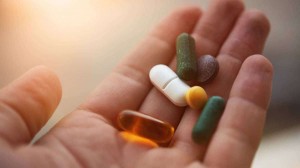How to lose body fat? Differences between losing weight and losing fat
Do you know the difference between losing weight and losing fat? Let's just say that when you lose weight, not all that weight you've lost is fat. There's a clear difference in how you approach your fitness, and cycling has something to do with it.

Losing weight or losing fat, that's the question
As Hamlet put it, there's a dilemma to be solved: to be or not to be, to lose weight or simply to lose fat. It's an interesting dilemma because often many cyclists focus on losing weight when in fact they are trying to lose fat; and some others, although less so, lose fat and other body elements, when their mission is simply to lose weight.

RECOMENDADO

How to wash your cycling clothes? 10 keys to make them always look new

This is how they erase the penises that are drawn on the roads of the Tour de France

When must the tubeless tire sealant be replaced? What quantity?

Free alternatives to Zwift

Guidelines for a perfect and safe tanned cyclist

How much money a cyclist can make in the Tour de France 2024?
The first part is simple and you will surely feel it. Often many cyclists are looking to lose weight and for that they train more or wear a rain jacket. It is a double combination that puts the focus on two fundamental issues or vectors: gaining muscle mass, which weighs more, and therefore you will gain weight; and losing liquids, which are soon recovered, and therefore you will not have lost any real weight, because you will regain it as soon as you drink water.

This is why the scale is relative. It's useful, but it's relative, because we often get our training chart and our forecasts of weight loss or fat loss wrong. Here we solve the dilemma and the doubts.
What to choose: lose weight or lose fat
First of all, let's assume that for the most part, for a healthier life, for a better shape, we will try to lose fat. Only circumstantially our mission will be to lose weight. Often, the two things go hand in hand.

Because weight is a much more variable factor than fat. Often, people lose weight but they do it by ways that involve early, rapid recovery. They are not synonymous, keep it clear.
Because your weight is not just fat. It's fat, but also water, muscle, bones or organs. So if your mission is to lose weight, change your goal: now your mission must be to reduce the amount of fat. Losing muscle is a risk; losing bone density is a risk; losing fluids is a risk. Losing fat progressively is healthy. Do you see the difference?

For this purpose, cycling is a fantastic sport. On long aerobic rides, often maintained for several hours, the body begins to lack direct fuel, such as sugar or glucose, and starts to pull in the fat. And here's the key: we'll burn fat. We may not lose weight initially because of muscle gain, but we will. But the fundamental thing is that we will lower the fat, our rate will decrease, and in the long run it will be the best, the right way.

Because, here's another one, the higher the level of lean fat, the higher the metabolic rate. Even when we are standing. Because it demands a constant burning of our organism. And if you walk, the first thing you lose is liquids, so the fat is still there.
The fat accumulated in the white adipocytes is difficult to eliminate. With this we want to tell you that a lot of cycling and patience. Do not believe in miracle diets, because their rebound effect will be even more pronounced if you are cycling. The fundamental part, the weekly training, don't change it. Leave the nutritional part in the hands of experts, and always eat in a healthy, varied way and in proportionate amounts (we all eat excessive amounts, much more than necessary).

We recommend that you measure your body fat. It's not BMI, the Body Mass Index, don't fall into that confusion. The DEXA (Dual Energy X-Ray Absorptiometry) is the most reliable professional test, but the cheapest and most direct is a scale but with bio-impendence. It is an estimation what these scales do, but quite accurate. And the figure, keep in mind: the ideal percentage of fat is between 15 and 25%.

In short: fewer miracles, more measurement and control of healthy eating, a bio-impendence scale. Oh, and lots of cycling. Let all the fat be the wheels of your mountain bike.